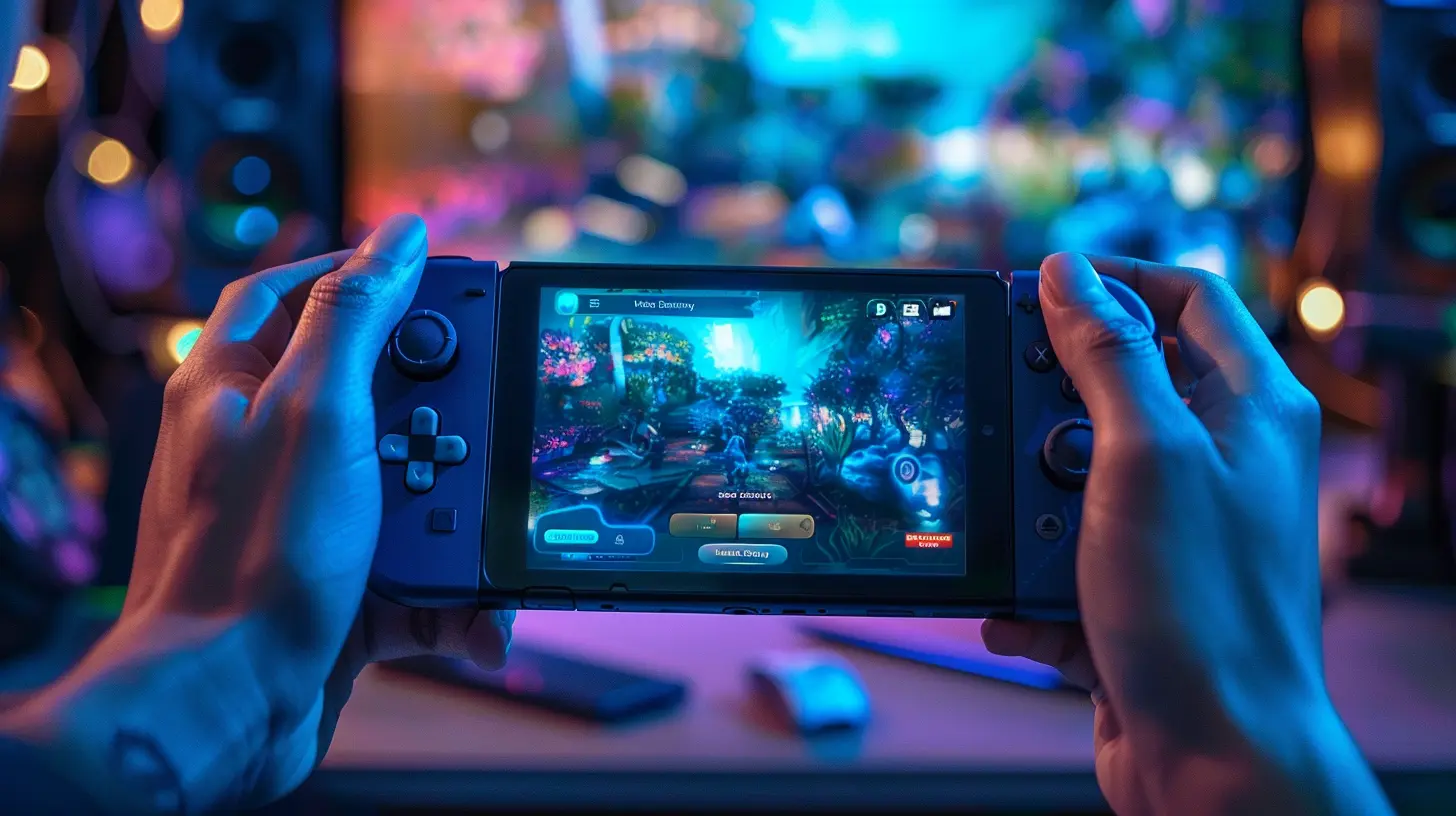Breaking Platform Barriers: The Technology Powering Cross-Platform Gaming
3 July 2025
If you're a gamer, you've probably faced this frustration before: you're on Xbox, your buddy is on PlayStation, and another friend is gaming away on their PC. For the longest time, this scenario meant you’d have to sit on the sidelines, unable to play together. I mean, why should the console or device you own decide who you can or can’t game with? That’s where cross-platform gaming comes in to save the day.
Cross-platform gaming is no longer some pie-in-the-sky dream—it’s a reality that’s breaking down traditional platform barriers. But what’s the wizardry behind it? How does it all work? Buckle up, because today, we’re diving deep into the technology powering cross-platform gaming. 
What Is Cross-Platform Gaming?
First off, let’s break it down. Cross-platform gaming (aka crossplay) allows players using different hardware—like PlayStation, Xbox, PC, and sometimes even mobile—to play the same game together. It’s like a universal gaming handshake that bridges the gap between previously isolated gaming communities.Gone are the days when you had to ask, "Wait, which console do you own?" Cross-platform gaming is uniting players, and honestly, it’s about time. Whether you’re teaming up for a squad in Fortnite, scoring goals in Rocket League, or battling it out in Call of Duty: Warzone, crossplay is becoming the norm rather than the exception.
But making it happen? That’s no small feat. 
The Challenges of Cross-Platform Gaming
Before we get into the techy stuff, let’s acknowledge one thing: building a cross-platform system isn’t easy. Game developers face a ton of challenges, and honestly, it’s kind of impressive how far they’ve come.Hardware and Performance Differences
Think about it—games have to run smoothly on everything from high-end gaming PCs with 4K graphics to the more modest specs of a Nintendo Switch. That’s like trying to make a movie look good on both a cinema screen and an old CRT TV. Balancing performance across different devices is no joke.Input Method Disparity
Then there’s the whole keyboard-and-mouse versus controller debate. On a PC, you’ve got the precision of a mouse for aiming, while console players rely on analog sticks. Developers have to figure out ways to level the playing field. Aim assist, anyone?Platform Policies
Oh, and let’s not forget the corporate red tape. Each platform—whether it’s Sony, Microsoft, or Nintendo—has its own set of rules, policies, and ecosystems. Convincing these tech behemoths to play nice? Yeah, that takes some serious diplomacy.So, how do developers actually pull it off? 
The Technology Behind Cross-Platform Gaming
Alright, let’s get into the nitty-gritty. At the heart of crossplay lies some pretty impressive technology. Here’s how the magic happens:1. Dedicated Servers
Ever wonder how players across platforms can connect seamlessly? It’s all thanks to dedicated servers. These servers act as neutral ground where gamers from different platforms can meet.Think of dedicated servers like a massive digital clubhouse. It doesn’t matter whether your invite came from an Xbox or a PlayStation—you’re all gathering in the same space. This eliminates the need for players to rely on peer-to-peer connections, which can be dicey depending on your friend’s internet quality.
2. Cross-Network Play APIs
APIs (Application Programming Interfaces) are the unsung heroes of crossplay. These are essentially the communication tools that let different systems “talk” to each other.For example, services like Epic Games’ crossplay tools or Xbox’s PlayFab help developers integrate matchmaking, leaderboards, and friend lists across platforms. APIs make it possible for a PC player to invite their console buddy to a game, even if they’re using completely different interfaces.
3. Cloud Gaming
Alright, here’s where things get futuristic. Cloud gaming is starting to play a big role in cross-platform experiences. With services like Xbox Cloud Gaming or GeForce NOW, the actual gameplay processing happens in massive data centers rather than your device.What’s cool about that? It doesn’t matter whether you’re playing on a $3,000 gaming rig or your grandma’s old tablet—everyone has access to the same high-quality gaming experience.
4. Custom Matchmaking Systems
Remember the whole keyboard-and-mouse versus controller issue? This is where custom matchmaking systems come in. These systems can group players by input type (e.g., controller players versus other controller players) to keep things fair.Some games, like Fortnite, even let you opt out of crossplay if you’d rather stick to competing within your own platform. It’s all about giving players choices. 
Why Is Cross-Platform Gaming a Big Deal?
So, why all the fuss about crossplay? For starters, it’s making gaming more inclusive than ever.Gaming has always been about connecting people, whether it’s sibling couch co-op or online multiplayer with friends around the world. Cross-platform gaming takes that connection to the next level.
Here’s why it matters:
1. Bigger Player Pools
Crossplay drastically increases the number of players you can match with. Let’s say you’re playing a niche game with a smaller player base—crossplay ensures you won’t be twiddling your thumbs waiting for a match.2. Bang for Your Buck
Games are expensive, and so are consoles. Cross-platform capabilities mean you no longer need to buy a specific console just to play with your friends. Gamers get more value for the money they’ve already spent.3. Unified Gaming Communities
Let’s be real: gaming communities can sometimes feel fragmented. Crossplay is breaking down those walls and uniting people based on their shared love of gaming, rather than the hardware they own.Cross-Platform Gaming in Action
Curious about how crossplay works in the wild? Here are a few games that have absolutely nailed it:- Fortnite: The trailblazer of cross-platform gaming, Fortnite lets players across PC, consoles, and mobile devices duke it out in battle royale goodness.
- Minecraft: Another juggernaut, Minecraft supports crossplay across pretty much every platform. Whether you’re on Switch or your smartphone, you can join your friends in building blocky masterpieces.
- Call of Duty: Warzone: Cross-platform play in Warzone is a game-changer for competitive FPS fans. Just watch out for those sweaty PC players with their lightning-fast reflexes.
These titles show us what’s possible when developers fully embrace crossplay.
The Future of Cross-Platform Gaming
So, what’s next? Cross-platform gaming is here to stay, and the technology supporting it is only going to get better. With advancements in cloud gaming, 5G connectivity, and new APIs, we’re moving closer to a world where platform barriers are a thing of the past.But beyond the tech, crossplay is changing gaming culture. It’s fostering inclusivity, cutting down on toxic console wars, and making gaming more accessible to everyone. Sounds like a win-win to me.
Wrapping It Up
Cross-platform gaming is one of the most exciting developments in the gaming world. It’s not just about the technology—although, let’s be real, the tech is pretty amazing—it’s also about the new era of gaming it represents.The idea that your hardware doesn’t limit your ability to play with friends is a game-changer (pun intended). Whether you’re teaming up for an epic victory or just having a laugh, crossplay truly embodies the spirit of gaming: bringing people together.
So, the next time you’re in a lobby with players from across platforms, take a moment to appreciate the wizardry that makes it possible. Because at the end of the day, gaming is better when we’re all in it together.
all images in this post were generated using AI tools
Category:
Cross Platform GamesAuthor:

Aurora Sharpe
Discussion
rate this article
2 comments
Hugo McGowan
Absolutely love the concept of breaking down platform barriers! It’s exciting to see how technology is uniting gamers across different devices. This not only enhances competition but also fosters a vibrant community. Can’t wait to see where this innovation takes us next! Keep up the great coverage!
November 3, 2025 at 6:15 PM

Aurora Sharpe
Thank you for your enthusiastic feedback! We're thrilled to explore how cross-platform gaming is uniting gamers and fostering community. Stay tuned for more insights!
Rose McSweeney
This article beautifully captures the transformative power of cross-platform gaming. It’s exciting to see technology bridging gaps and uniting players. Thank you for shedding light on this important evolution in our gaming community!
July 12, 2025 at 5:09 AM

Aurora Sharpe
Thank you for your kind words! I'm glad the article resonated with you and highlighted the exciting advancements in cross-platform gaming.

